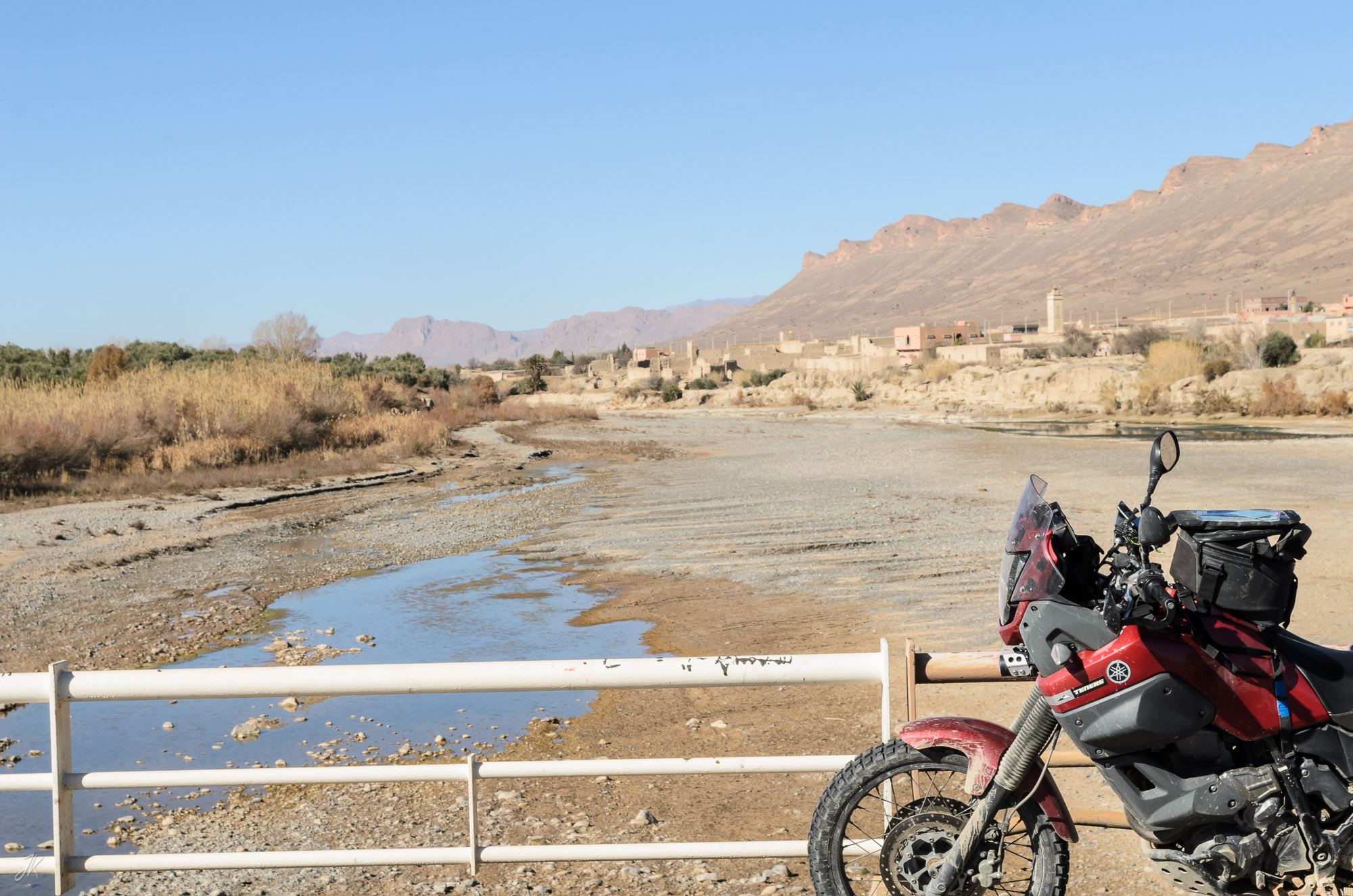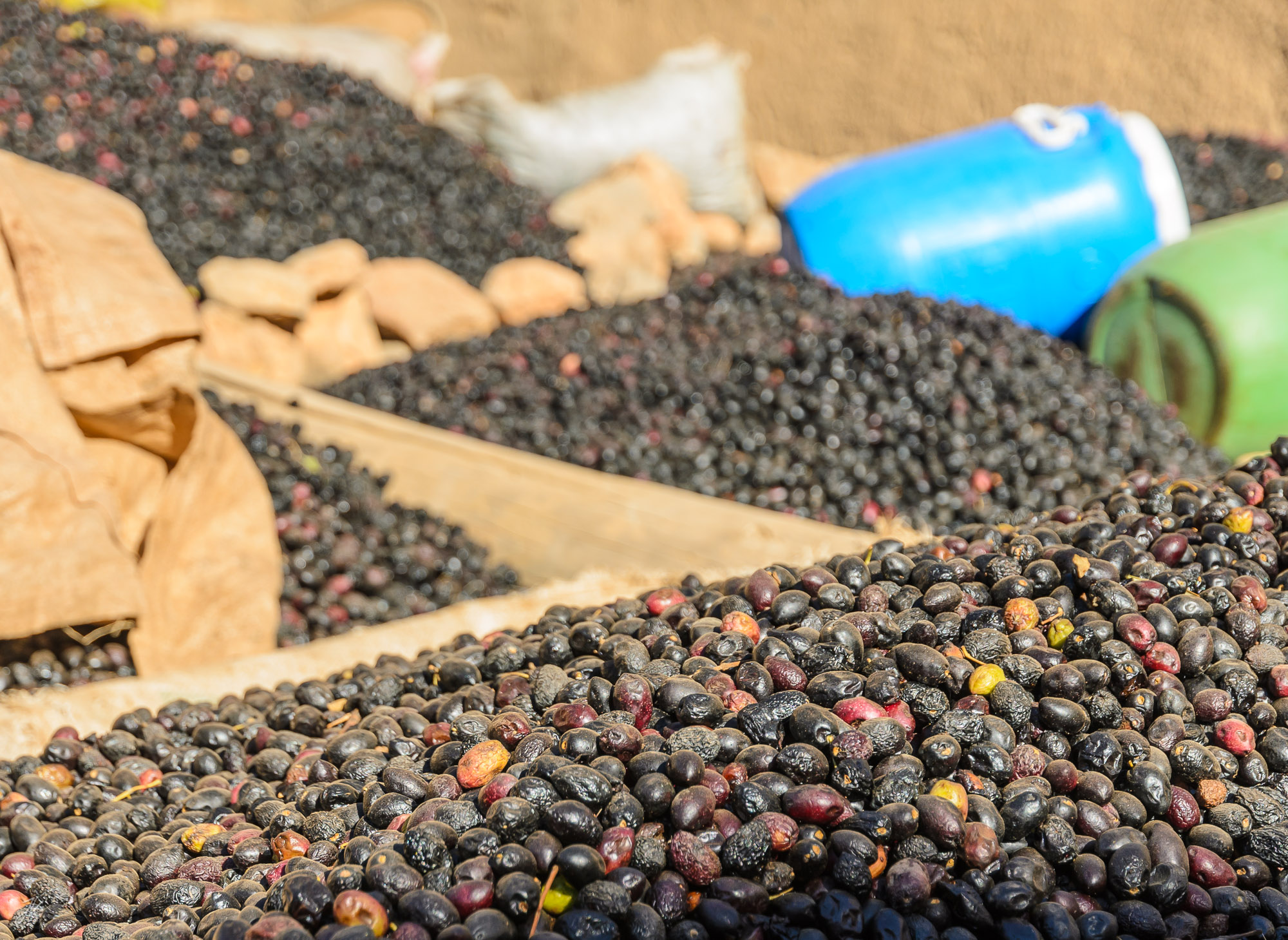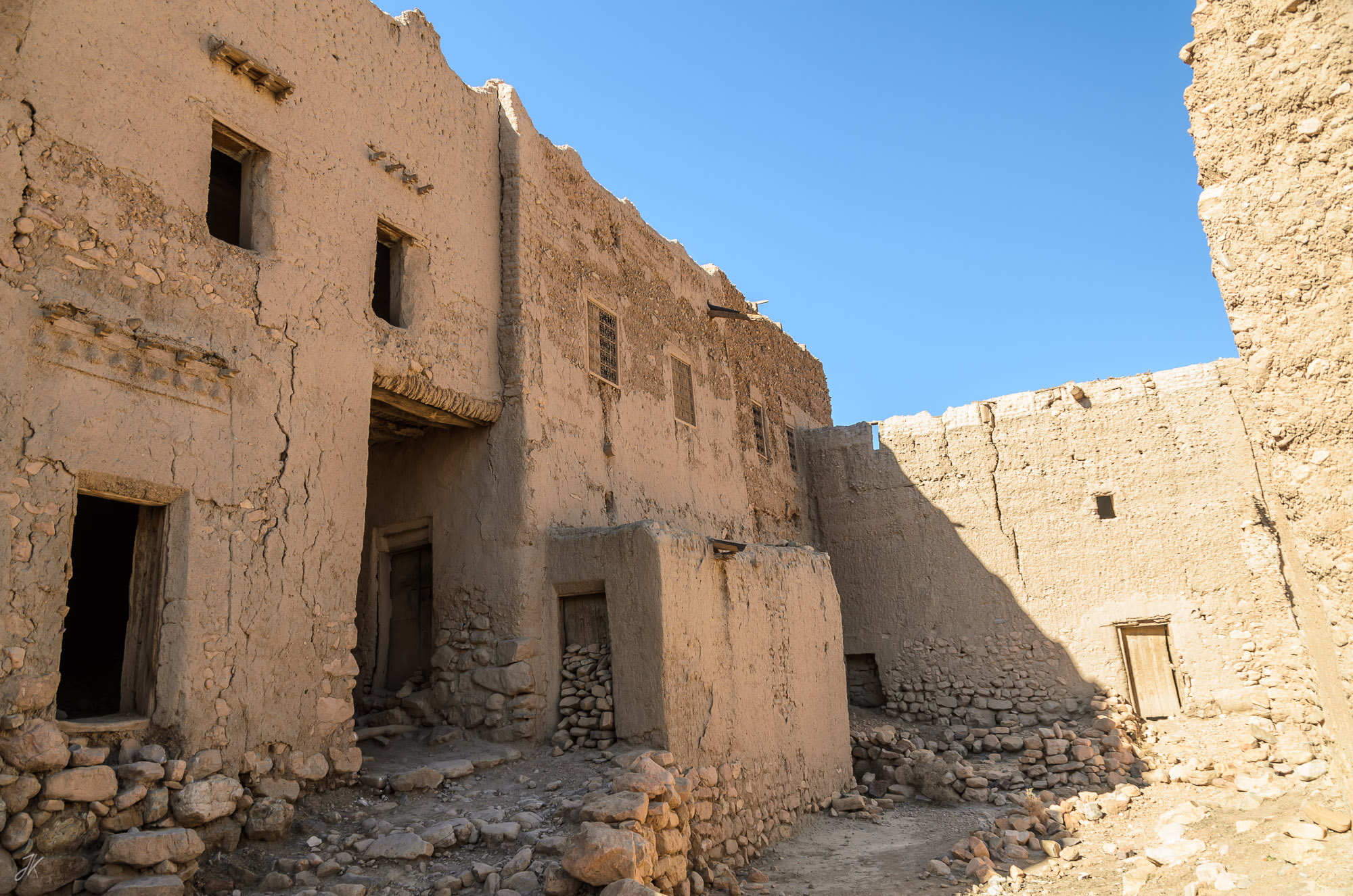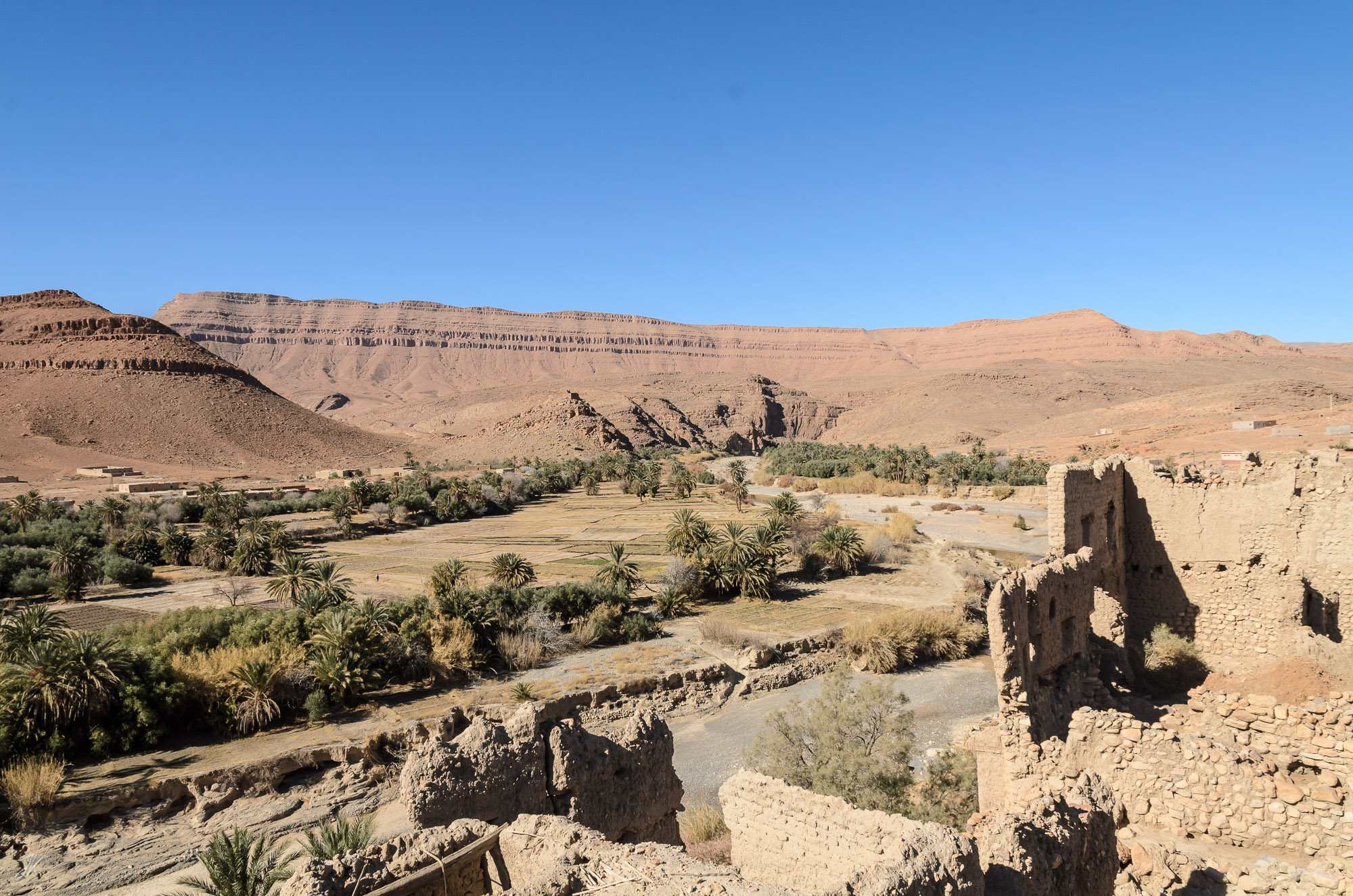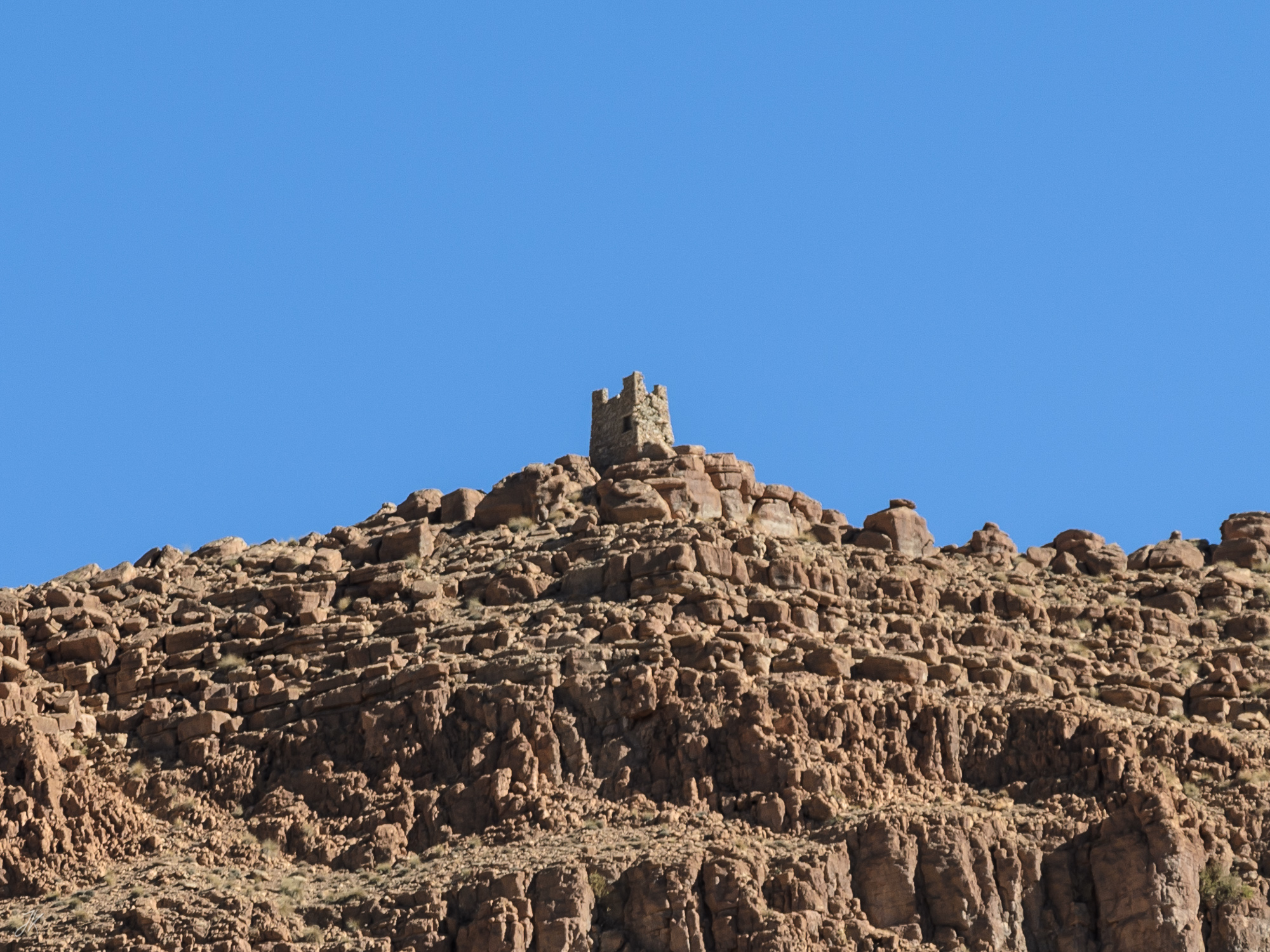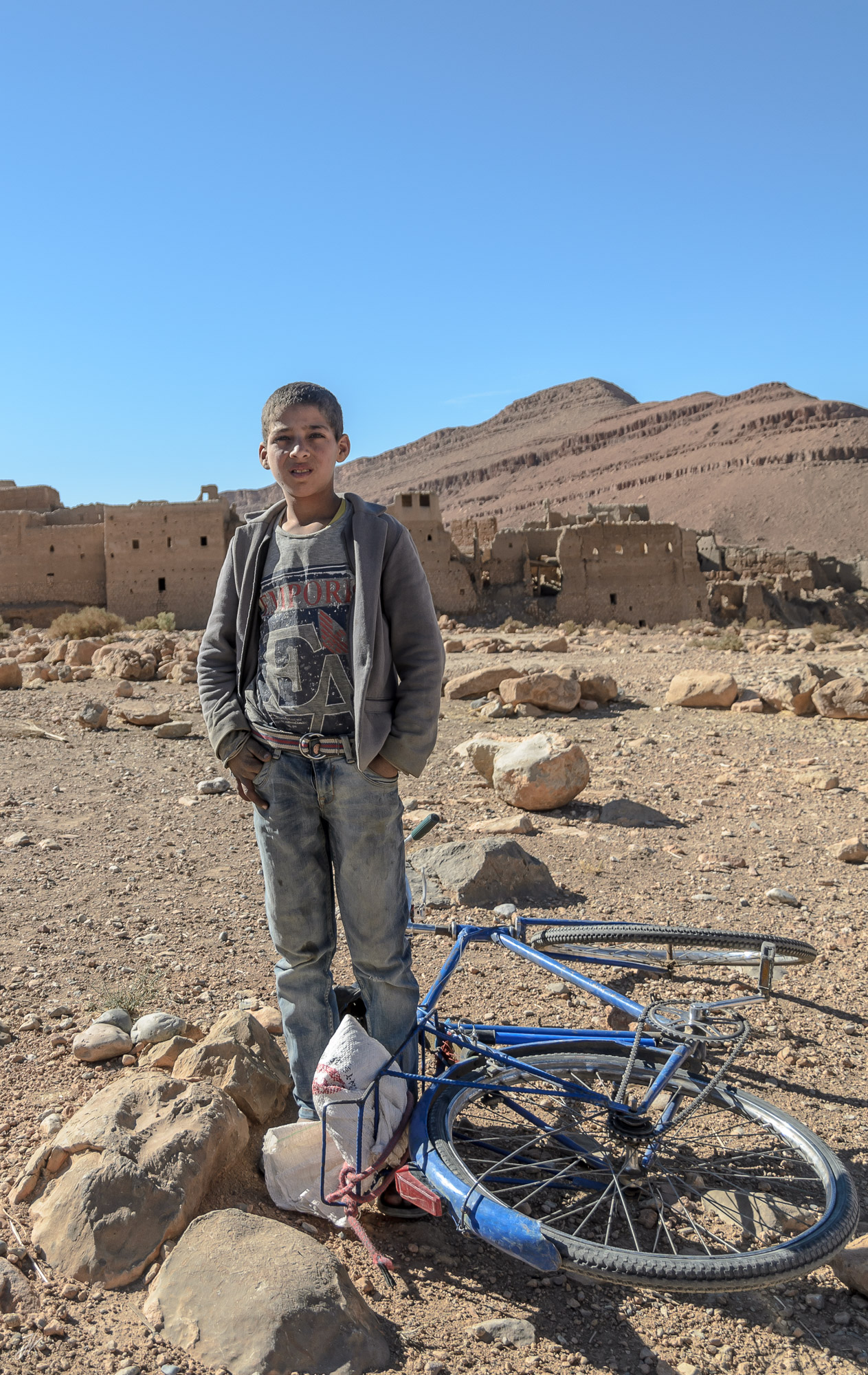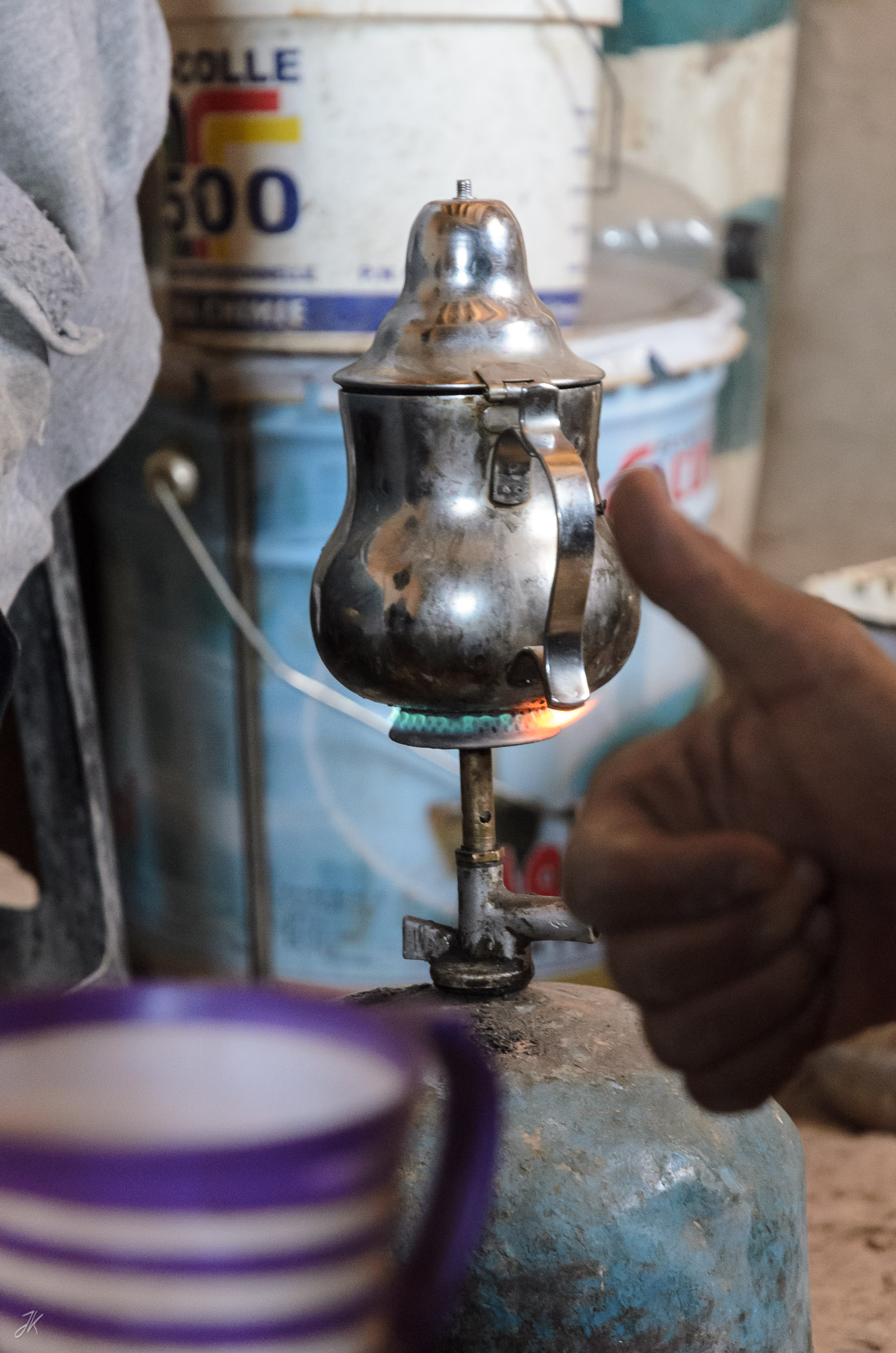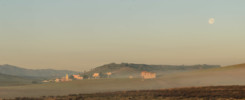…or how chance encounters can result in some of the best travel memories. This episode is less about riding and more about one of these events that unfold only if you abandon plans and embrace coincidence.
Anyway, I started the day in Midelt with the intent of crossing the Atlas and riding towards the dune fields of Erg Chebbi. The morning was bitter cold (later I got told Midelt is the coldest town in Morocco) and I followed the main road southwards. The road was nice with sweeping curves, following a river, which had a carved a spectacular canyon.
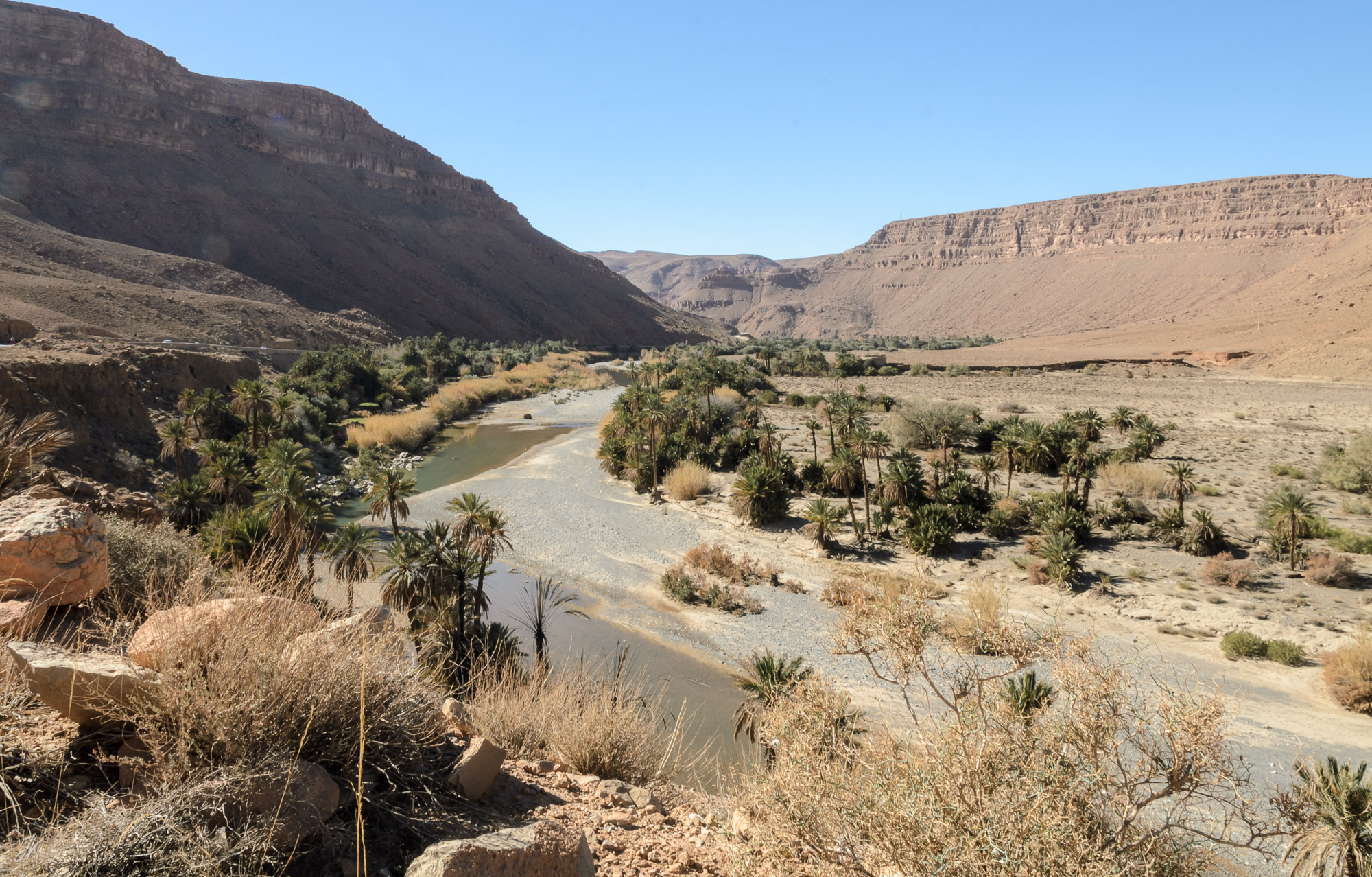
I stopped by the side of the road, trying to capture the scenery with the river providing the water of live for a few palm trees in the otherwise dry and hostile environment.

When this guy, Said, came along. We started to talk (he spoke a very good german, which was quite a surprise to me) and soon I found myself invited to his village.
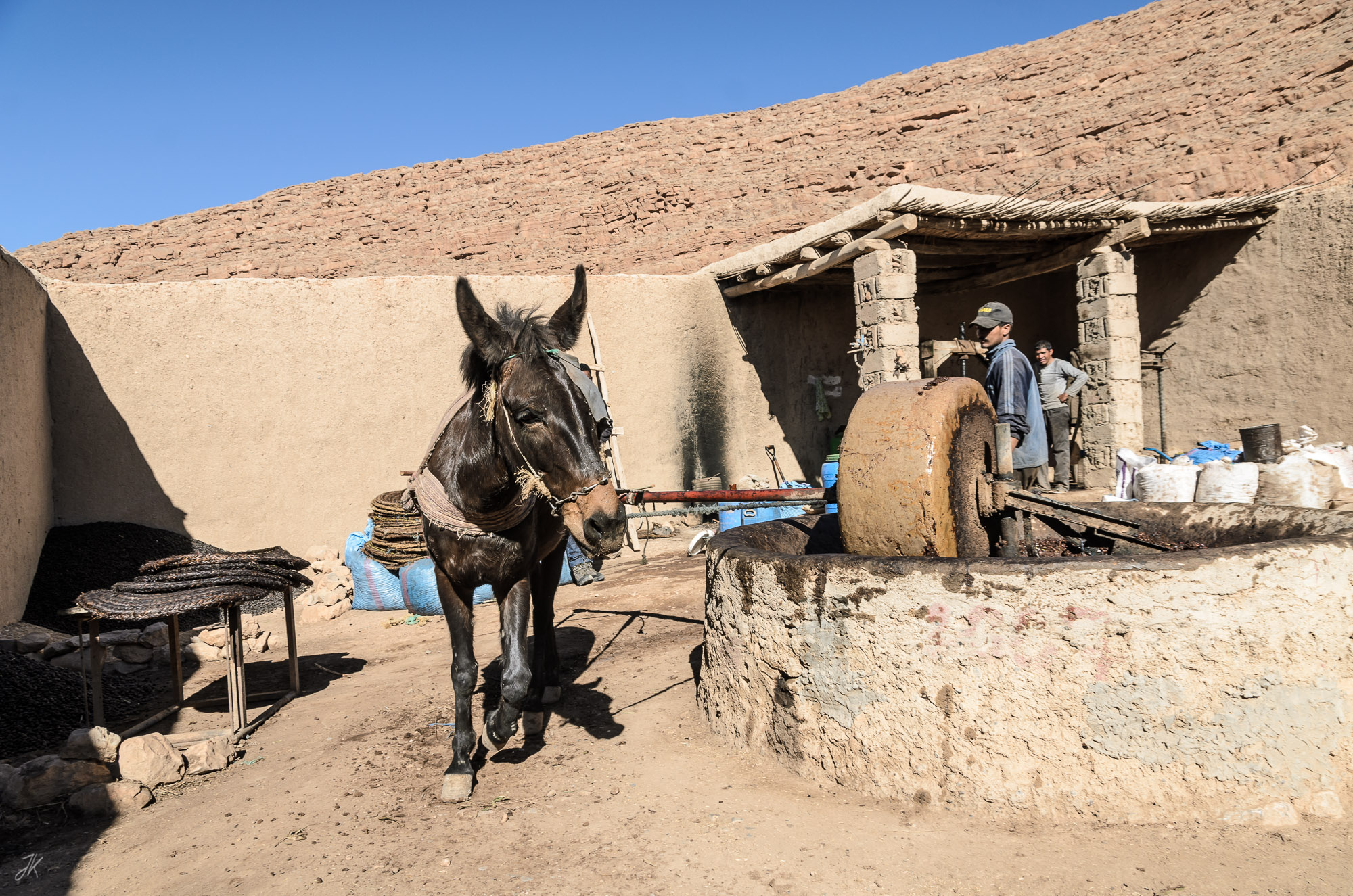
This place was the first stop, traditional olive oil production, complete with a mule driving the millstone to mash the olives. Note the rag on its left eye to prevent it from realizing it’s walking in circles.
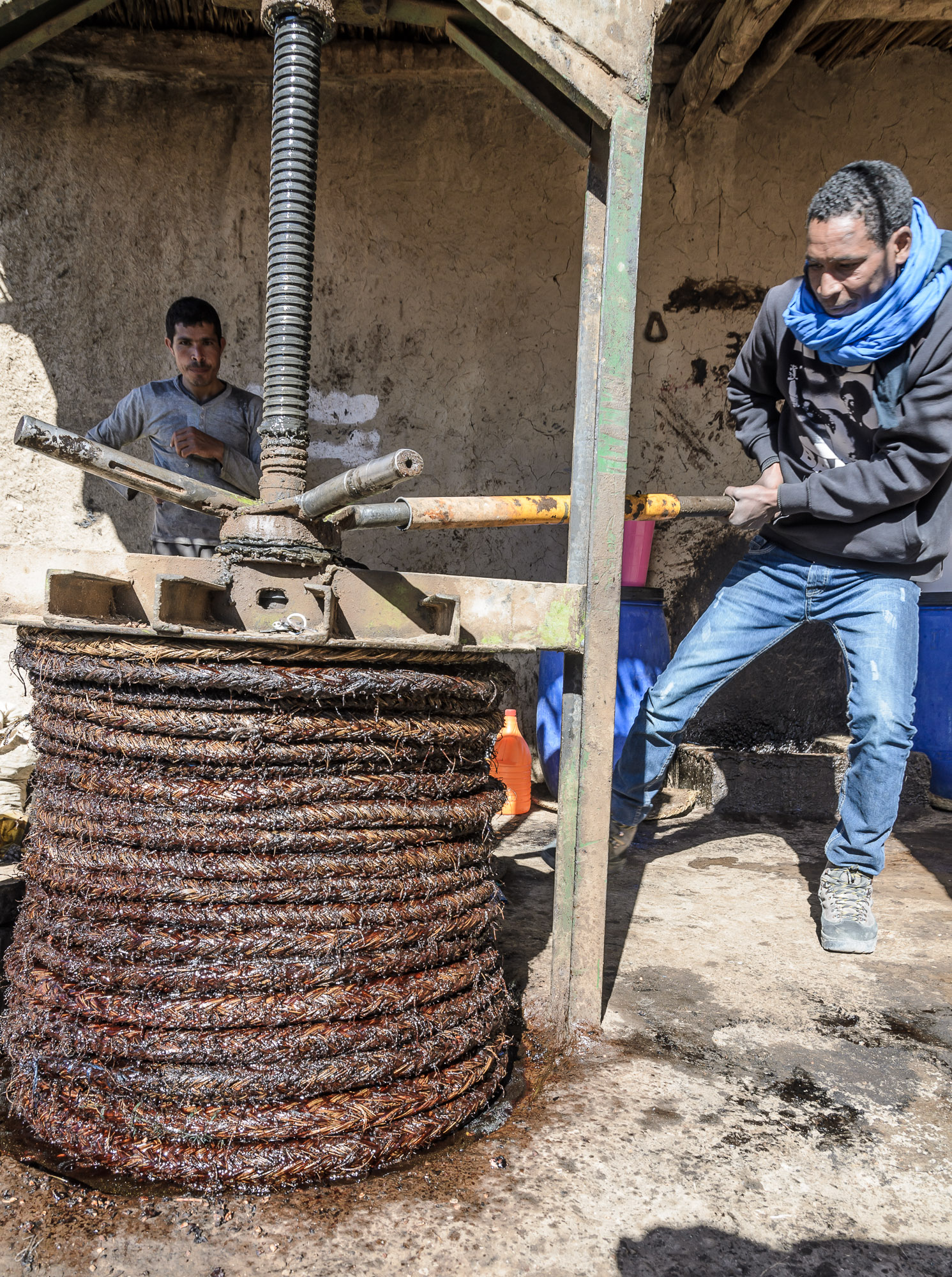
After mashing, the olives are placed in a basket and get pressed. There are channels in the ground to collect the out-flowing water/oil mixture in a barrel in the ground. The barrel is then left overnight to let the oil and water separate (oil on top, water below).
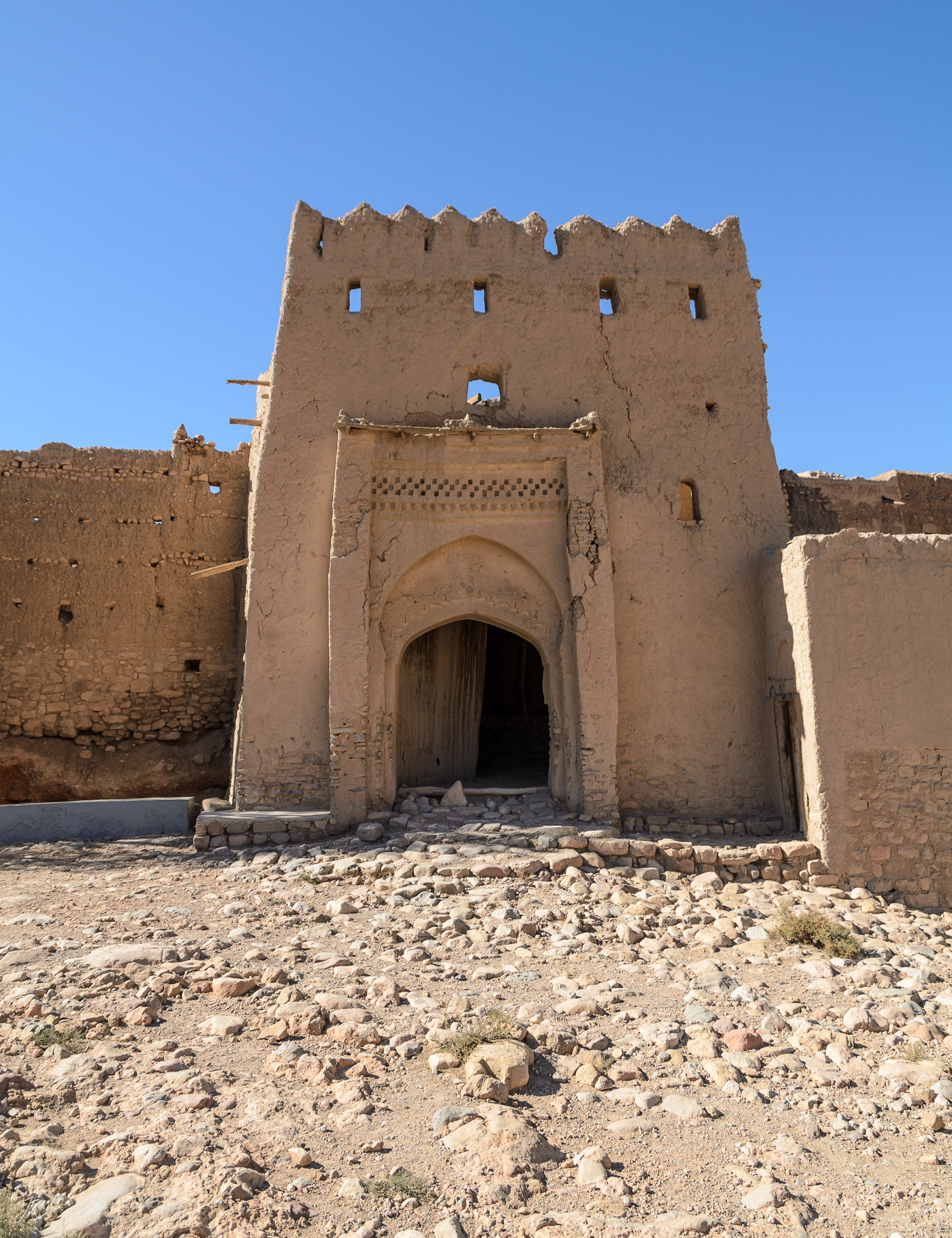
The next stop in Said’s village, he also wanted to show me the kasbah, a fortified central part of a village. From the outside, only the gate and walls with small windows can be seen …
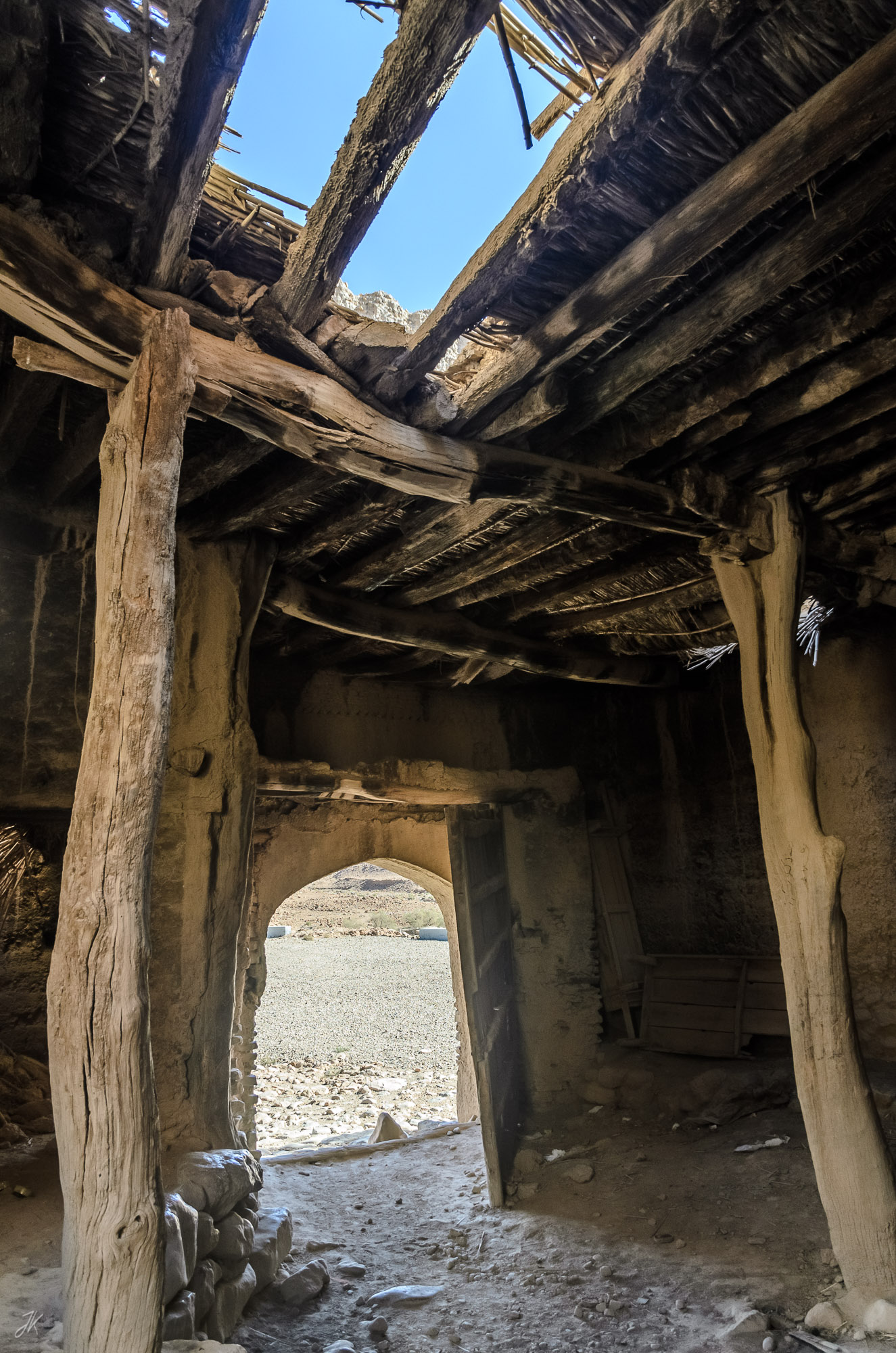
Inside the gatehouse. Now it’s just a crumbling ruin, but in earlier days it was a communal and commercial centre.
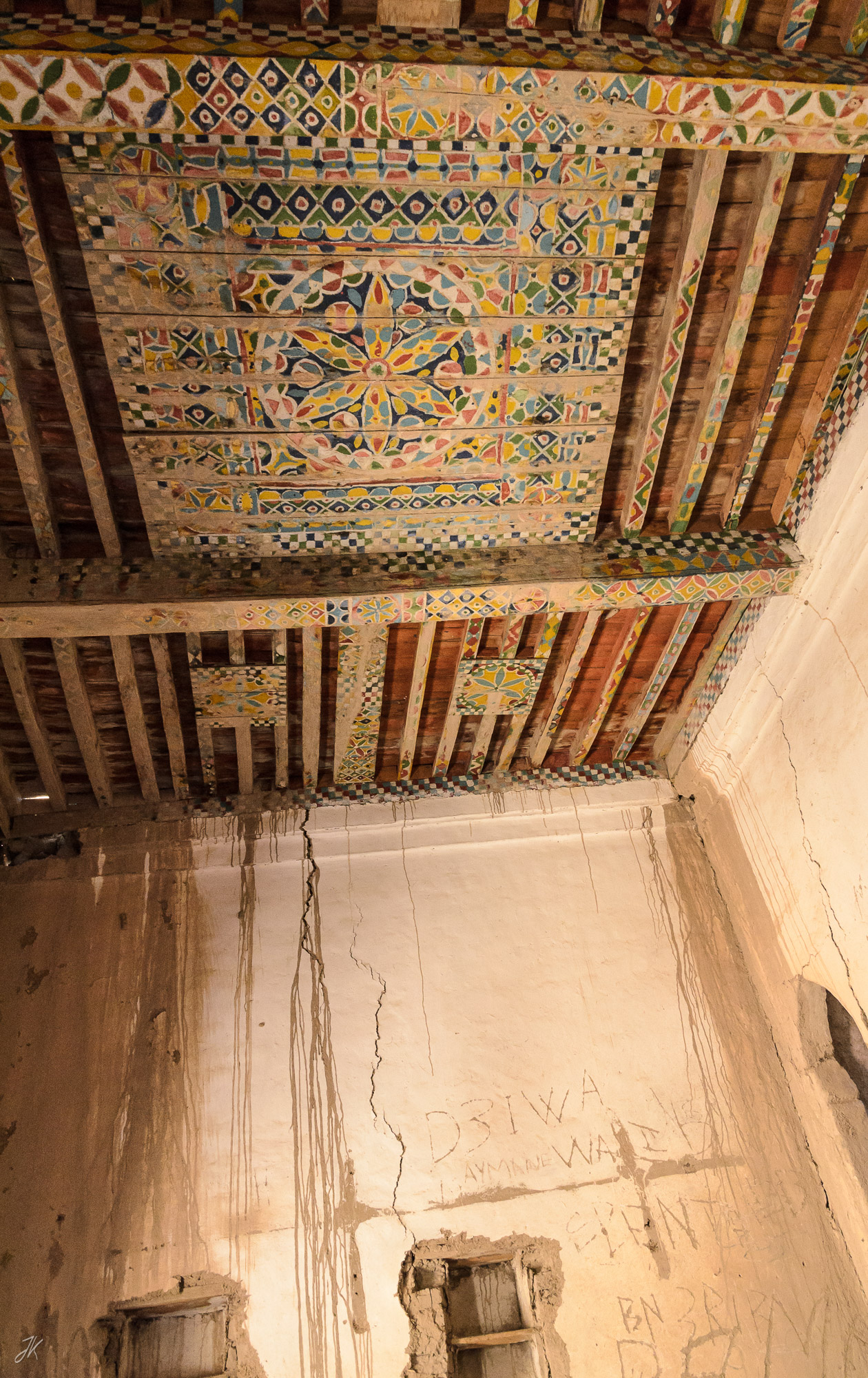
These intricate paintings on the roof in one of the houses gives a glimpse how the homes of the people might have looked like.
